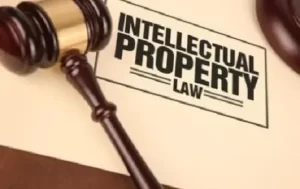A social media influencer is someone who creates content based on their niche in various…
An Analysis Of The Intellectual Property Rights Division Rules, 2021
The Tribunals Reforms Bill, 2021 had initially proposed the ideal that a select few appellate bodies be dissolved and the powers they hold were to be transferred to pre-existing judicial bodies. The Intellectual Property Appellate Board (IPAB) was one amongst the few to go through the process of being dissolved. In the landmark case of Madras Bar Association v. Union of India, the Tribunals Reforms Ordinance, 2021 was challenged on the basis of it not being in compliance with judgements based on Tribunals. Subsequently in July 2021, two crucial provisions related to the tenure and minimum age requirement for members of the tribunal were struck down. This meant that all appeals which were pending before the IPAD were transferred to their respective High Courts along with commercial courts which had the jurisdiction to try the cases. This led to the submission made by the Delhi High Court on the 6th of July with regard to the establishment of the IPR Division for the purpose of dealing with multiplicity of proceedings and to additionally avoid the possibilities of confusions with regard to intellectual properties of the same character.
Analysis
The Division Rules consist of a framework of thirty-one rules which deal with various procedures and definitions that are to be applied while cases of the IPD are under trial. An important aspect of this is the General Clause which makes an appearance under Rule 24; it essentially provides that any procedure which isn’t specifically provided for within the ambit of these Rules, shall alternatively be governed by the Civil Procedure Code, 1908 subsequently amended by the Commercial Courts Act, 2015 along with the Delhi High Court Rules, 2018.
The Rules additionally lay down provisions for summary adjudication under Rule 21 and 22 based on principles similar to those contained under Order XIIIA, of the Code of Civil Procedure, 1908 as applicable to commercial suits under the Commercial Courts Act, 2015.
Interestingly enough, Rule 2(a) read with Rule 2(i) explains what comes under the ambit of ‘Intellectual Property Rights’ along with the statutes that are applicable to the Rules;
- The Designs Act, 2000;
- The Patents Act, 1970;
- The Copyright Act, 1957;
- The Geographical Indications of Goods (Registration and Protection) Act, 1999;
- The protection of Plant Varieties and Farmers Rights Act, 2001;
- The Trade Marks Act, 1999;
- The Semiconductor Integrated Circuits Layout Design Act, 2000.
Within Rule 2(i), the proviso along rights pertaining to differently expressed Intellectual property statutes, recognizes the rights pertaining to data protection, exclusivity and matters which are related. Pertaining to Rule 2(I), IPR matters or proceedings must include all original appellate and other proceedings as mentioned in Rule 2(i). Subsequently, under Rule 4 which pertains to jurisdiction, all IPR matters filed before the Intellectual Property Office must be heard by a single judge of the IPO.
A section of significance can be found among Rules 10 to 14 which speaks of the procedures to be followed while directing a suit towards the IPD –
- Procedure for Regular First Appeal [Rule 10]
- Procedure for First Appeal from Order [Rule 11]
- Procedure for Civil Revision Petition [Rule 12]
- Procedure for CM (Mains), FAOs, RFAs, CRPs [Rule 13]
- Procedure for Suits [Rule 14].
Along with this, to avoid unnecessary delays in the disposal of suits, the Delhi High Court has ensured that strict guidelines of written submissions and timelines for oral submissions must be followed in accordance with Rule 28 of the Division Rules.
[Image sources : Shutterstock]
Conclusion
A few areas under which significant deliberation can take place with respect to the Rules, includes the following:
- Additional clarity with regard to the Locus Standi of agents, experts etc. to the case for extending applications to the confidentiality club needs to be determined.
- Rule 31, deals with the constitution of a Panel of experts that provides advisory assistance to the court relating to the subject matter of the case. The provision is in resonance with maintaining the adjudicatory function, however, it fails to elaborate the criteria of appointment. To ensure that this process isn’t arbitrary, significant clarity is required to deal with the same.
Author: Meghana Srinivas – student of Symbiosis Law School, Hyderabad, in case of any queries please contact/write back to us via email [email protected] or at IIPRD.



